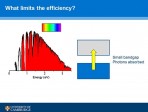 01:02:00
01:02:00
Developing new solar cells – cheaper, or more efficient?
Using solar cells to convert sunlight to electricity is an attractive way to reduce carbon emissions, but solar cells are still too expensive to be installed on the scale required. The next generation of solar cells aim to solve this problem using st....
More details | Watch now 00:57:00
00:57:00
Experimental misunderstandings: the precedent of Francis Bacon’s ‘Sylva Sylvarum’ and the beginnings of the Royal Society
Guido Giglioni is the Cassamarca Lecturer in Neo-Latin Culture and Intellectual History at the Warburg Institute, University of London. By writing a number of natural histories and above all the Sylva Sylvarum, Bacon set an important but difficult pr....
More details | Watch now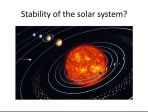 01:26:00
01:26:00
Curious maths: finding the solution
Unsolved problems in mathematics have intrigued us for centuries. It took over 350 years for anyone to provide a proof for Fermat's Last Theorem, considered by many as the most notorious problem in the history of mathematics, and no one has yet offer....
More details | Watch now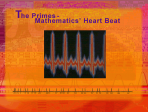 01:26:00
01:26:00
Curious maths: finding the solution
Unsolved problems in mathematics have intrigued us for centuries. It took over 350 years for anyone to provide a proof for FermatÕs Last Theorem, considered by many as the most notorious problem in the history of mathematics, and no one has yet offe....
More details | Watch now 01:27:00
01:27:00
Nature’s marvellous medicine
For hundreds of years we have used plants and their extracts for their healing properties. Ancient Egyptians chewed white willow bark to relieve fevers and reduce inflammation, and many years later scientists discovered that the bark contains salicyl....
More details | Watch now 00:29:00
00:29:00
The art of stealth: a virus in my liver
The liver is a vital organ that works like a chemical factory every day to keep you alive. But what exactly does it do and how do viruses exploit it to hide from the immune system? With help from volunteers, Dr Zania Stamataki will demonstrate some....
More details | Watch now 00:44:00
00:44:00
Medical myths and misconceptions
Can a cold land you in hot water? ÊCan you live without your liver? ÊCan you tell medical fact from fiction? WeÕve all been told to eat our crusts, that an apple a day keeps the doctor away and that weÕll catch a cold if we go outside with wet ha....
More details | Watch now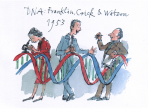 00:51:00
00:51:00
My sister Rosalind Franklin
Jenifer Glynn discusses her bookÊMy Sister Rosalind Franklin. With the help of family letters and memories, the book puts Rosalind Franklin's DNA work in the context of her other achievements, and Rosalind herself in the context of her family.
More details | Watch now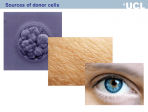 01:29:00
01:29:00
Stem cells: a cure for blindness?
Retinal degeneration is a leading cause of blindness in the western world. Drug treatments currently available only serve to slow the diseaseÕs progress and are not always successful. Rachael Pearson has helped develop a novel therapeutic approach t....
More details | Watch now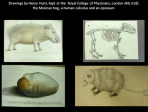 00:48:00
00:48:00
Unsung heroes: artistic contributors to the early Royal Society
This lecture discusses the contribution of draftsmen, engravers, artistic fellows and others whose graphic skills were indispensable for the meetings and publications of the early Royal Society (1660-1720). While some of the names of those who produc....
More details | Watch now 01:01:00
01:01:00
Dark, clowdy and impertinent’ – Thomas Browne’s scientific language
Succulent, cretaceous, technology, parasitical, electricity . . . Scientific investigation in the seventeenth century generated new ideas, and scientists needed new words to express them. Experimentalists, observers, collectors, and technicians all c....
More details | Watch now 00:59:00
00:59:00
Making the tiniest machines
Over the past few years some of the first examples of synthetic molecular level machines and motors Ñ all be they primitive by biological standards Ñhave been developed. These molecules respond to light, chemical and electrical stimuli, inducing mo....
More details | Watch now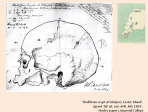 01:00:00
01:00:00
Maritime science and the visual culture of exploration: the albums of a Victorian naval surgeon
Naval officers in general, and surgeons in particular, played a significant role in the development of maritime science, through their observations and their collections. This richly-illustrated talk explores the visual culture of maritime science, f....
More details | Watch now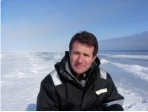 01:04:00
01:04:00
Storms, floods and droughts: predicting and reporting adverse weather
2012 was one of the Òtop five wettest years on recordÓ, however the beginning of the year saw a widespread drought across much of the UK.Ê Join David Shukman, Science Editor for BBC News, and Professor Tim Palmer FRS as they discuss extreme and ad....
More details | Watch now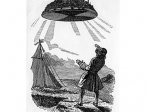 00:48:00
00:48:00
Laputian Newtons: the science and politics of Swift’s ‘Gullivers Travels’
GulliverÕs Travels (1726) contains probably the most famous satire on science in world literature, but the circumstances behind its composition are little known. In this talk, Greg Lynall explains how GulliverÕs ÔVoyage to LaputaÕ was shaped by J....
More details | Watch now 00:45:00
00:45:00
The Royal Society and the Rothschild ‘Controversy’
In the early months of 1971 the Heath government asked Lord Victor Rothschild to Ôthink the unthinkableÕ in his investigation into government policy. His subsequent report on research funding proposed something the Royal Society judged to be wholly....
More details | Watch now 01:01:00
01:01:00
Discovery of a dynamic atmosphere at one of Saturn’s moons, Enceladus
In recent years, Enceladus, Saturn's sixth largest moon, has become a major attraction for scientists, with many believing it offers the best hope we have of discovering other life in our solar system. NASA's Cassini spacecraft has been orbiting Satu....
More details | Watch now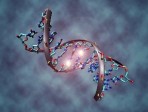 01:17:00
01:17:00
Genetics, epigenetics and disease
The human genome sequence has been available for more than a decade, but its significance is still not fully understood. While most human genes have been identified, there is much to learn about the DNA signals that control them. This lecture describ....
More details | Watch now 01:06:00
01:06:00
Sustainable materials: with both eyes open
One third of the world's carbon emissions are emitted by industry. Most industrial emissions relate to producing materials, and steel and cement are by far the most important contributors. The industries that make materials are energy-intensive, so h....
More details | Watch now 01:00:00
01:00:00
The secret mathematicians
Artists are constantly on the hunt for interesting new structures to frame their creative process. From composers to painters, writers to choreographers, the mathematician's palette of shapes, patterns and numbers has proved a powerful inspiration.
More details | Watch now 01:08:00
01:08:00
Nobel Lives
An audience with Nobel prize winners John Sulston FRS and Sydney Brenner FRS, who talk to Sarah Montague of BBC Radio 4's Today Programme, about their lives in science and their visions for the future.
More details | Watch now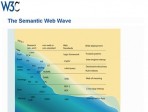 00:45:00
00:45:00
The future of the world wide web
Professor Tim Berners-Lee was made a Fellow of the Royal Society in recognition of his invention and subsequent development of the world wide web. In this lecture he describes how he sees the future of the web - the Semantic Web - and how the lessons....
More details | Watch now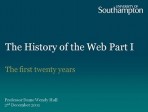 00:49:00
00:49:00
The History of the Web Part I: the First 20 Years
Join Professor Wendy Hall FRS as she speaks about the development of the World Wide Web over the past twenty years. She is Professor of Computer Science at the University of Southampton. Her research interests include the development of web technol....
More details | Watch now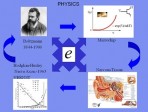 01:07:00
01:07:00
Bioinspired technology: from cochlear implants to an artificial pancreas
Biology is inspiring technology, which in turn replaces biology. This global trend towards ageing populations, less active lifestyles and fast-food diets, is leading to more cases of, and earlier onset of, chronic conditions such as Type 2 diabetes a....
More details | Watch now
